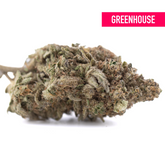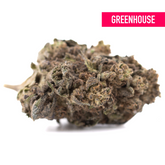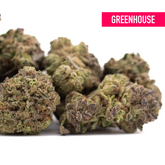Hemp Edibles: Converting THCA into THC for Infusions
The world of hemp-derived edibles has evolved significantly, offering consumers powerful alternatives to traditional cannabis products. Understanding how to properly convert THCA (tetrahydrocannabinolic acid) into THC (tetrahydrocannabinol) through decarboxylation represents the foundation of creating effective homemade edibles. This comprehensive guide explores the science, techniques, and commercial opportunities surrounding hemp edible production, from small-scale home preparation to large-scale wholesale operations.
Understanding THCA and Its Conversion to THC
THCA exists naturally in raw hemp and cannabis plants as the precursor to THC. Unlike THC, THCA doesn't produce psychoactive effects in its raw form. The conversion process, known as decarboxylation, removes a carboxyl group from the THCA molecule through controlled heat application, transforming it into the psychoactive THC compound that makes edibles effective.
The decarboxylation process occurs naturally over time through aging and exposure to light, but controlled heat application accelerates this conversion dramatically. Understanding optimal temperature and time parameters ensures maximum conversion efficiency while preserving other beneficial compounds like terpenes and minor cannabinoids that contribute to the entourage effect.
When working with hemp flower high in THCA, the question "can you make edibles with THCA flower" becomes not just relevant but essential for anyone seeking to create potent, effective edible products. The answer is definitively yes, provided proper decarboxylation techniques are employed to activate the cannabinoids.
Raw THCA flower contains minimal activated THC, typically less than 0.3% by dry weight in compliant hemp products. However, through proper decarboxylation, significant portions of THCA convert to THC, creating products with substantially higher psychoactive potential. This conversion process forms the cornerstone of effective edible production from hemp materials.
The Science of Decarboxylation
Decarboxylation represents a chemical process where carboxyl groups are removed from organic compounds. In cannabis and hemp, this process converts THCA into THC, CBDA into CBD, and other acidic cannabinoids into their active forms. Understanding the scientific principles behind decarboxylation helps optimize the conversion process for maximum efficiency.
Temperature control proves crucial for effective decarboxylation. The optimal temperature range falls between 220-250°F (104-121°C), with 240°F (116°C) representing the sweet spot for most applications. Lower temperatures require longer exposure times, while higher temperatures risk degrading THC into CBN (cannabinol), reducing the final product's potency and altering its effects.
Time parameters work in conjunction with temperature to achieve complete conversion. At 240°F, decarboxylation typically requires 30-40 minutes for maximum conversion efficiency. Shorter periods may leave significant amounts of unconverted THCA, while longer exposure risks cannabinoid degradation and loss of potency.
Moisture content affects decarboxylation efficiency. Properly cured hemp flower with 10-15% moisture content decarboxylates more efficiently than overly dry or excessively moist material. Monitoring moisture levels and adjusting decarboxylation parameters accordingly ensures optimal results.
Choosing the Right Hemp Flower for Edibles
Selecting appropriate hemp flower forms the foundation of successful edible production. High-THCA strains provide the raw material necessary for creating potent edibles after decarboxylation. Popular strains like Gas Monkey and Cherry Abacus offer excellent starting points due to their high THCA content and favorable terpene profiles.
Quality assessment becomes crucial when selecting flower for edible production. Visual inspection should reveal dense trichome coverage, proper curing, and minimal stem content. Fresh, properly stored flower typically produces better yields and more flavorful final products than degraded or improperly stored material.
Laboratory testing results provide essential information about cannabinoid profiles, ensuring you understand the starting material's potential. THCA percentages directly correlate to potential THC content after decarboxylation, helping calculate appropriate dosing for final products.
Bulk purchasing options like THCA smalls pounds or cheap hemp flower pounds offer cost-effective solutions for larger-scale edible production. These options provide significant cost savings while maintaining quality standards necessary for effective edible creation.
Commercial Edible Market Opportunities
The commercial hemp edible market presents substantial opportunities for entrepreneurs and established businesses alike. THCA edibles bulk purchasing allows retailers to offer competitive pricing while maintaining healthy profit margins. Understanding wholesale dynamics helps businesses position themselves effectively in this growing market.
THCA edibles wholesale operations require understanding regulatory compliance, quality control, and supply chain management. Successful wholesale operations typically focus on consistent product quality, reliable supply chains, and comprehensive testing protocols to ensure customer satisfaction and regulatory compliance.
Bulk THCA edibles distribution requires sophisticated logistics and storage capabilities. Temperature-controlled storage, proper packaging, and efficient distribution networks become essential for maintaining product quality throughout the supply chain.
Market positioning within the edible space requires understanding consumer preferences and regulatory requirements. Products like THCA gummies have gained significant popularity due to their convenience, consistent dosing, and appealing flavors that mask hemp's natural taste.
Gummy Production and Wholesale Opportunities
THCA gummies wholesale represents one of the fastest-growing segments within the hemp edible market. Gummies offer several advantages including precise dosing, extended shelf life, and consumer-friendly formats that appeal to both new and experienced users.
Production scalability makes gummies attractive for bulk THCA gummies manufacturing. Standardized recipes, automated production equipment, and consistent quality control procedures enable large-scale production while maintaining product consistency and quality standards.
THCA gummies bulk purchasing allows retailers to offer competitive pricing while maintaining adequate profit margins. Volume discounts and wholesale pricing structures make bulk purchasing attractive for dispensaries, retail stores, and online retailers serving the hemp market.
Quality control becomes paramount in gummy production. Consistent dosing, uniform texture, appropriate shelf stability, and appealing flavors all contribute to successful products. Professional manufacturing facilities typically employ sophisticated quality control systems to ensure consistent results across large production runs.
Decarboxylation Methods and Techniques
Oven Decarboxylation
Oven decarboxylation represents the most common method for home-scale operations. This technique involves spreading ground hemp flower on a baking sheet and heating at 240°F for 30-40 minutes. Covering the material with aluminum foil helps prevent moisture loss while allowing adequate heat circulation.
Preparation steps include grinding the flower to increase surface area and promote even heating. Coarse grinding works better than fine powder, which can burn more easily. Spreading material evenly across the baking surface ensures consistent heat exposure throughout the decarboxylation process.
Monitoring involves checking color changes and aroma development. Properly decarboxylated material typically shifts from bright green to golden brown, developing a more pronounced, toasted aroma. Over-decarboxylation results in darker brown coloration and potential potency loss.
Temperature verification using an oven thermometer ensures accuracy, as many home ovens display inaccurate temperatures. Maintaining consistent temperature throughout the process proves crucial for optimal conversion efficiency.
Sous Vide Decarboxylation
Sous vide decarboxylation offers precise temperature control and reduces odor production compared to oven methods. This technique involves vacuum-sealing hemp flower and heating in a water bath at exactly 203°F for 90 minutes, providing gentle, consistent heating that maximizes conversion while preserving terpenes.
Equipment requirements include a sous vide immersion circulator, vacuum sealer, and appropriate bags rated for the temperatures involved. This method requires higher initial investment but offers superior control and consistency compared to oven methods.
Advantages include precise temperature control, reduced odor production, and better terpene preservation. The sealed environment prevents volatile compounds from escaping, resulting in more flavorful final products with enhanced therapeutic profiles.
Processing considerations involve ensuring proper vacuum sealing to prevent water infiltration and allowing adequate circulation around sealed packages. Larger batches may require longer processing times to ensure complete heat penetration.
Commercial Decarboxylation Equipment
Large-scale operations typically employ specialized decarboxylation equipment designed for consistent, efficient processing of hemp materials. These systems offer precise temperature and time control while handling much larger volumes than home-scale methods.
Industrial decarboxylation ovens feature sophisticated temperature control systems, uniform heat distribution, and automated timing controls. These systems can process hundreds of pounds of material simultaneously while maintaining consistent results across entire batches.
Continuous processing systems allow for ongoing production with material entering and exiting the system continuously. These systems maximize efficiency for high-volume operations while reducing labor requirements and ensuring consistent product quality.
Quality monitoring systems integrated into commercial equipment provide real-time feedback on temperature, humidity, and processing progress. These systems help operators optimize processing parameters and ensure consistent results across different batches and material types.
Infusion Techniques and Carrier Selection
Fat-Based Infusions
Fat-based carriers like butter, coconut oil, and MCT oil provide excellent vehicles for cannabinoid extraction and incorporation into edible products. These carriers' lipophilic properties allow efficient cannabinoid dissolution while providing stable, long-lasting infusions suitable for various applications.
Butter infusions remain popular due to butter's versatility in baking applications. The process involves gently heating decarboxylated hemp flower with butter at low temperatures (160-180°F) for 2-4 hours, allowing cannabinoids to dissolve into the fat while avoiding degradation from excessive heat.
Coconut oil offers advantages including higher saturated fat content, which may improve cannabinoid absorption, and longer shelf life compared to butter. The infusion process mirrors butter preparation but may require slightly longer processing times due to coconut oil's different properties.
MCT oil provides a neutral flavor profile and enhanced bioavailability compared to other carriers. This carrier works particularly well for applications where butter or coconut oil flavors might interfere with desired taste profiles.
Alcohol-Based Extractions
Alcohol extractions create potent tinctures suitable for direct consumption or incorporation into various edible preparations. High-proof alcohol (190+ proof) works best for extraction, efficiently pulling cannabinoids and terpenes from decarboxylated plant material.
The extraction process involves soaking decarboxylated material in alcohol for several hours to several days, depending on desired potency and extraction efficiency. Gentle agitation during extraction improves cannabinoid transfer from plant material to alcohol.
Evaporation techniques can concentrate alcohol extractions by removing some of the alcohol content, creating more potent preparations. This process requires careful attention to prevent over-concentration, which can result in difficult-to-dose products.
Safety considerations include proper ventilation during extraction and evaporation processes, as alcohol vapors present fire hazards. Working in well-ventilated areas away from heat sources helps ensure safe processing.
Water-Based Extractions
Water-based extraction methods typically require emulsification agents to create stable cannabinoid suspensions, as cannabinoids are not naturally water-soluble. Lecithin, polysorbate, and specialized emulsifiers help create stable water-based cannabinoid preparations.
Emulsification improves bioavailability by creating smaller particle sizes that absorb more readily in the digestive system. Proper emulsification techniques can significantly enhance the effectiveness of water-based cannabinoid preparations.
Processing involves combining decarboxylated material with water and emulsification agents, then processing with high-shear mixing or ultrasonic equipment to create stable emulsions. These preparations work well for beverages and other water-based edible applications.
Stability considerations include proper pH control, appropriate preservatives, and suitable packaging to maintain emulsion stability over time. Water-based preparations typically have shorter shelf lives than fat-based infusions.
Dosing and Potency Calculations
Accurate dosing calculations ensure consistent, predictable effects from homemade edibles. Understanding how to calculate potential THC content based on starting material helps create appropriately dosed products that meet user expectations and safety requirements.
Starting calculations involve determining total THCA content in the source material based on laboratory testing results or estimated percentages. Multiplying flower weight by THCA percentage provides total THCA content, which converts to approximately 87.7% of that amount in THC after complete decarboxylation.
Infusion efficiency varies depending on extraction method, processing time, and carrier type. Typical home extraction methods achieve 60-80% efficiency, meaning not all available cannabinoids transfer to the final infusion. Accounting for this efficiency helps create more accurate dose calculations.
Final product calculations involve dividing total cannabinoid content by the number of servings to determine per-serving dose. This calculation helps ensure consistent dosing across batches and allows users to predict effects accurately.
Quality Control and Testing Considerations
Home producers should implement basic quality control measures to ensure consistent, safe products. Visual inspection, standardized recipes, and consistent processing parameters help maintain quality across different batches.
Professional testing becomes important for commercial operations and provides valuable feedback for home producers serious about quality. Laboratory testing can verify cannabinoid content, check for contaminants, and ensure products meet safety standards.
Potency verification through testing helps validate dosing calculations and ensures products meet labeled specifications. This verification becomes particularly important for commercial operations subject to regulatory oversight.
Contamination testing screens for pesticides, heavy metals, residual solvents, and microbial contamination. These tests ensure product safety and help identify potential issues in source materials or processing methods.
Advanced Techniques and Innovations
Nano-Emulsification
Nano-emulsification creates extremely small cannabinoid particles that absorb more rapidly and completely than traditional preparations. This technology can significantly reduce onset times and improve bioavailability of edible products.
Equipment for nano-emulsification includes ultrasonic processors, high-pressure homogenizers, or specialized nano-emulsification systems. These technologies create particle sizes measured in nanometers, dramatically improving absorption characteristics.
Applications for nano-emulsified cannabinoids include beverages, fast-acting edibles, and sublingual preparations. These products typically demonstrate faster onset times and more predictable effects compared to traditional edible preparations.
Commercial availability of nano-emulsified ingredients allows smaller producers to incorporate this technology without significant equipment investments. Third-party nano-emulsification services provide access to advanced processing capabilities.
Liposomal Encapsulation
Liposomal encapsulation protects cannabinoids during digestion while improving absorption in the intestinal tract. This technology can significantly enhance bioavailability and create more consistent effects from edible products.
Processing involves creating liposomes using phospholipids and specialized equipment to encapsulate cannabinoids within lipid bilayers. These structures protect cannabinoids from degradation while facilitating cellular uptake.
Benefits include improved bioavailability, reduced first-pass metabolism, and more consistent absorption patterns. Liposomal preparations often require lower doses to achieve equivalent effects compared to traditional edibles.
Commercial liposomal ingredients provide access to this technology for smaller producers. Third-party encapsulation services offer processing capabilities for businesses seeking to incorporate liposomal technology.
Regulatory Considerations and Compliance
Understanding applicable regulations ensures compliant edible production and distribution. Hemp-derived products must comply with federal regulations regarding THC content, labeling requirements, and manufacturing standards.
Federal compliance requires finished products to contain less than 0.3% Delta-9 THC by dry weight. This limitation affects dosing strategies and may require careful calculation to ensure compliance while maintaining effectiveness.
State regulations vary significantly and may impose additional requirements regarding testing, labeling, packaging, and distribution. Understanding local regulations helps ensure full compliance with applicable laws.
Documentation requirements include maintaining records of source materials, processing procedures, testing results, and distribution. Proper documentation helps demonstrate compliance and provides protection in case of regulatory scrutiny.
Market Trends and Consumer Preferences
The hemp edible market continues evolving rapidly, with consumers seeking convenient, precisely dosed products that deliver consistent effects. Products like incredible edibles and top shelf incredible edibles represent premium market segments focused on quality and consistency.
Specialized products targeting specific needs have gained popularity. Items like tranquil blend CBD gummies appeal to consumers seeking relaxation benefits, while THC/CBD gummies for pain target therapeutic applications.
Regional variations in product availability reflect different regulatory environments. Products like Delta 9 gummies Georgia demonstrate how regional regulations influence product formulations and marketing approaches.
Wholesale market segments including Delta 8 gummies wholesale, wholesale CBD gummies, and CBD gummies wholesale continue expanding as retailers seek reliable suppliers for growing consumer demand.
Business Opportunities and Scaling Considerations
The expanding hemp edible market presents numerous opportunities for entrepreneurs and existing businesses. CBD edibles wholesale operations can serve retailers seeking reliable suppliers, while bulk Delta 8 edibles distribution addresses growing demand for alternative cannabinoid products.
Scaling considerations include production capacity, quality control systems, regulatory compliance, and distribution capabilities. Successful scaling requires systematic approaches to maintaining quality while increasing production volumes.
Investment requirements vary significantly based on desired scale and market positioning. Home-based operations require minimal investment, while commercial manufacturing facilities require substantial capital for equipment, facilities, and regulatory compliance.
Market positioning strategies should consider target demographics, price points, and competitive landscape. Premium products like mellow vibes edibles command higher prices but require superior quality and marketing.
Future Developments and Innovations
Technological advances continue improving edible production efficiency and product quality. Automated processing equipment, advanced testing systems, and innovative delivery mechanisms represent areas of ongoing development.
Ingredient innovations including new emulsifiers, flavoring agents, and cannabinoid combinations expand possibilities for product development. These innovations enable creation of products with improved effectiveness, better taste, and enhanced consumer appeal.
Regulatory evolution may expand opportunities while potentially imposing additional requirements. Staying informed about regulatory trends helps businesses prepare for changes and capitalize on new opportunities.
Consumer education remains crucial for market development. As consumers better understand cannabinoid differences and effects, demand for sophisticated products with specific cannabinoid profiles will likely increase.
Conclusion
Converting THCA into THC for hemp edible production represents both an art and a science, requiring understanding of chemistry, processing techniques, and market dynamics. Whether pursuing home-scale production or commercial opportunities, success depends on mastering decarboxylation processes, selecting appropriate source materials, and implementing effective infusion techniques.
The commercial opportunities within the hemp edible space continue expanding, with wholesale markets for various product categories providing paths to business success. Understanding quality control, regulatory compliance, and consumer preferences positions producers for success in this dynamic market.
As technology advances and regulations evolve, the hemp edible industry will likely see continued innovation and growth. Producers who master fundamental techniques while staying current with industry developments will be best positioned to capitalize on emerging opportunities and serve the growing consumer demand for high-quality hemp-derived edible products.
The foundation of successful edible production remains consistent: quality source materials, proper decarboxylation, effective infusion techniques, and accurate dosing. Mastering these fundamentals provides the basis for creating products that meet consumer expectations while building sustainable businesses in the expanding hemp market.













